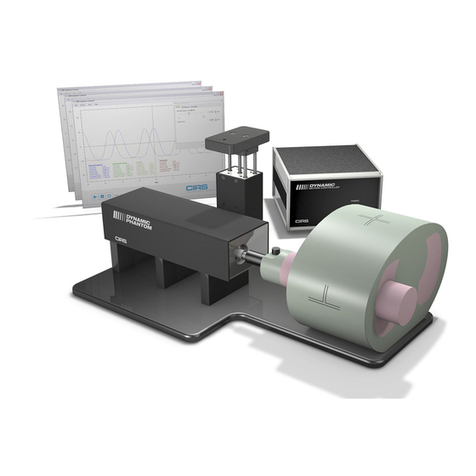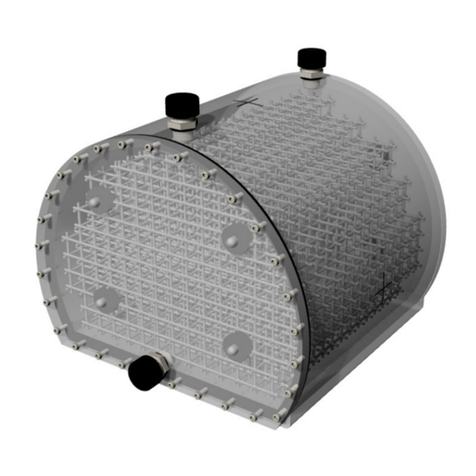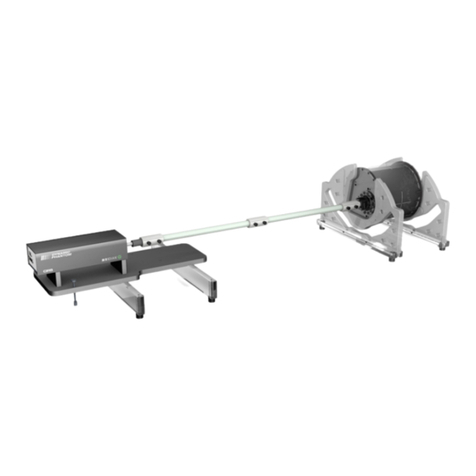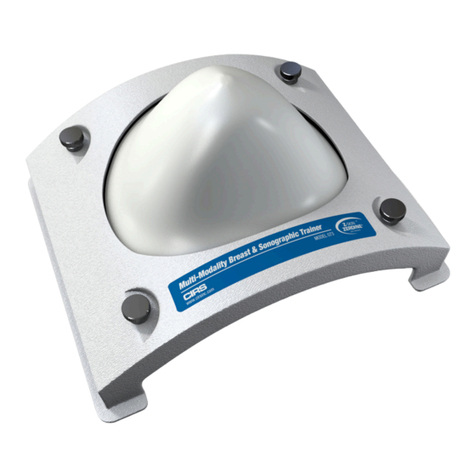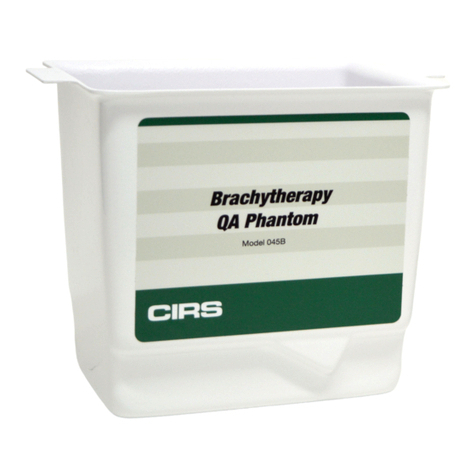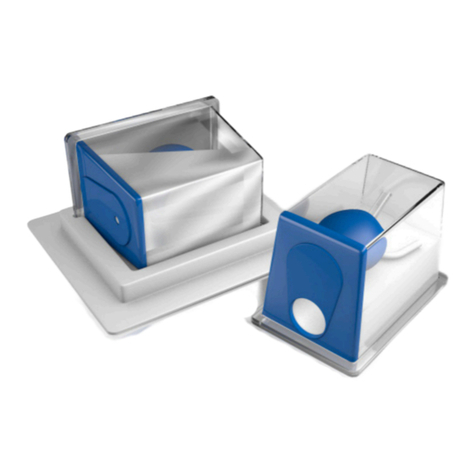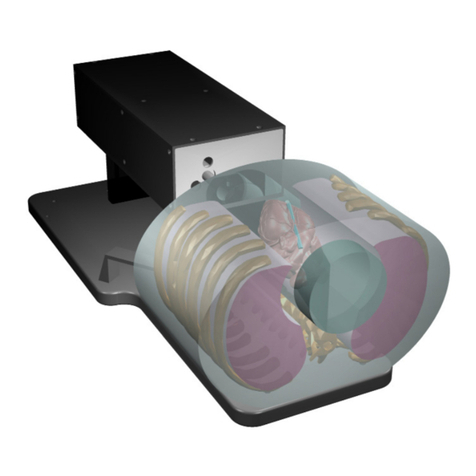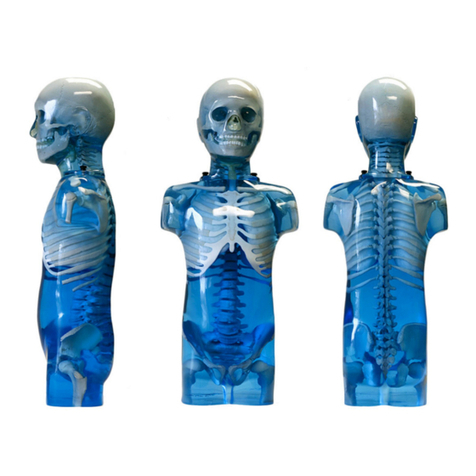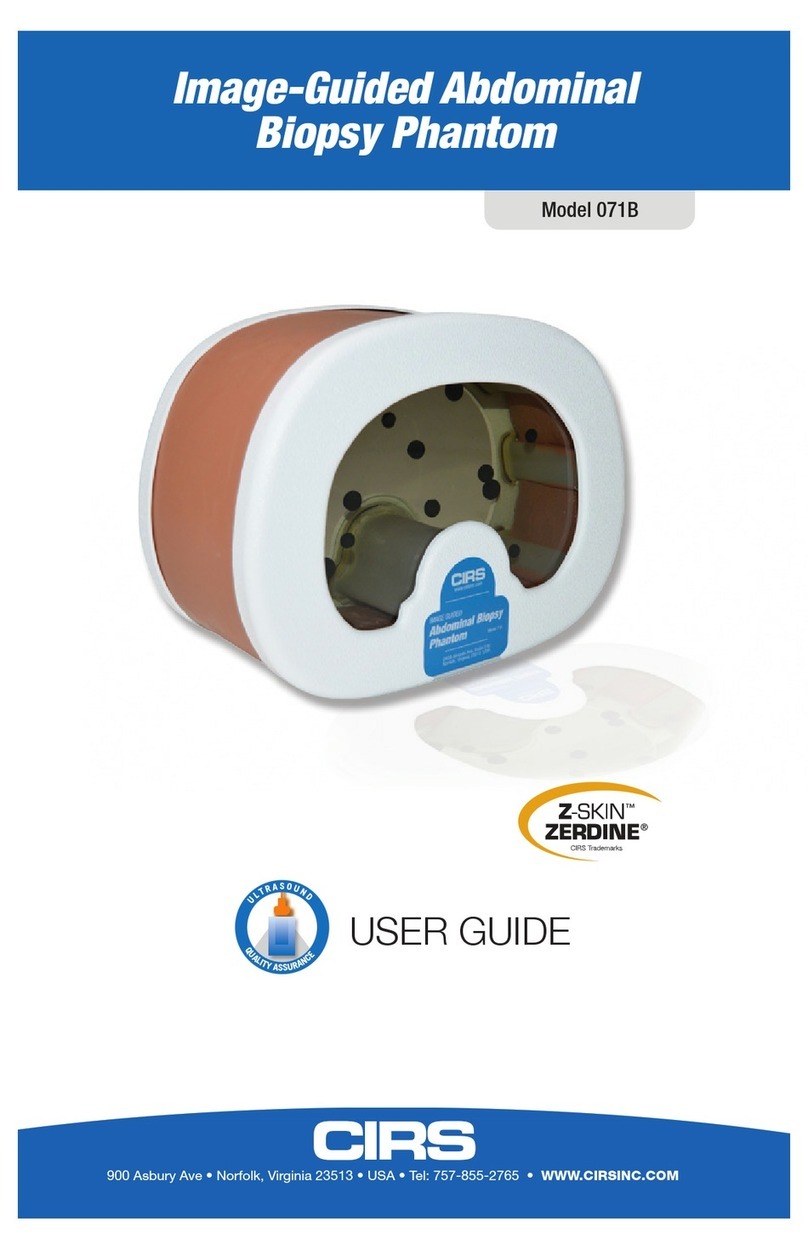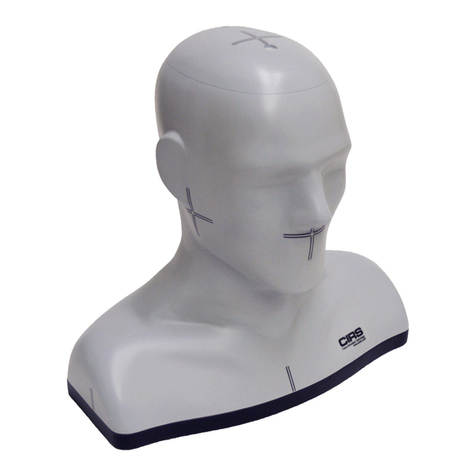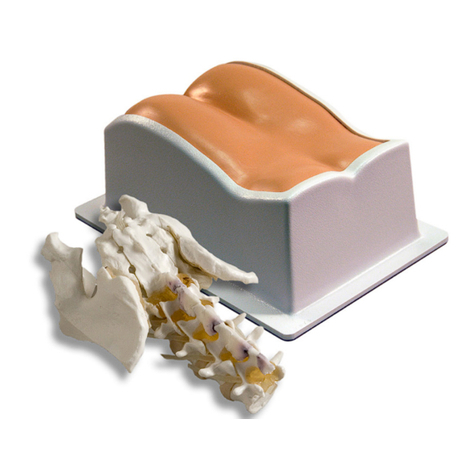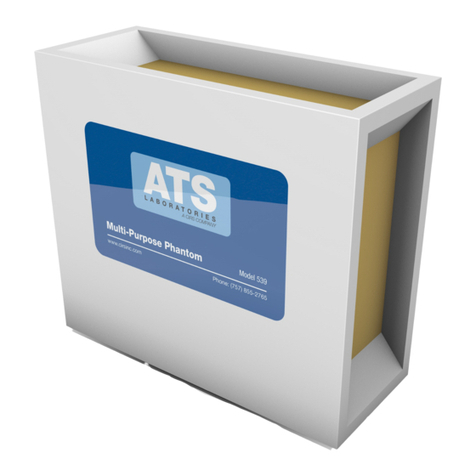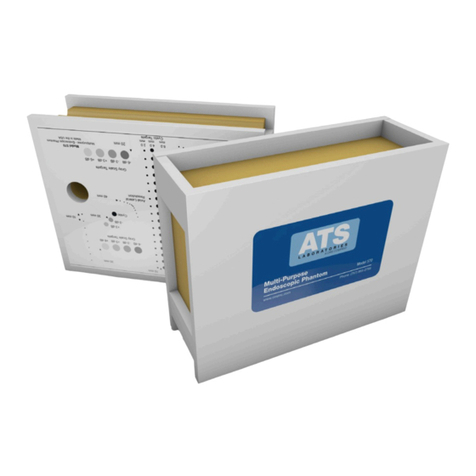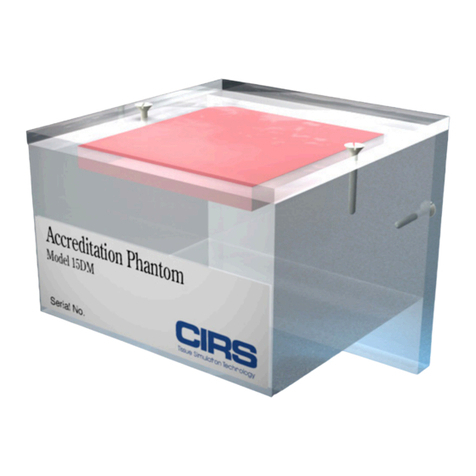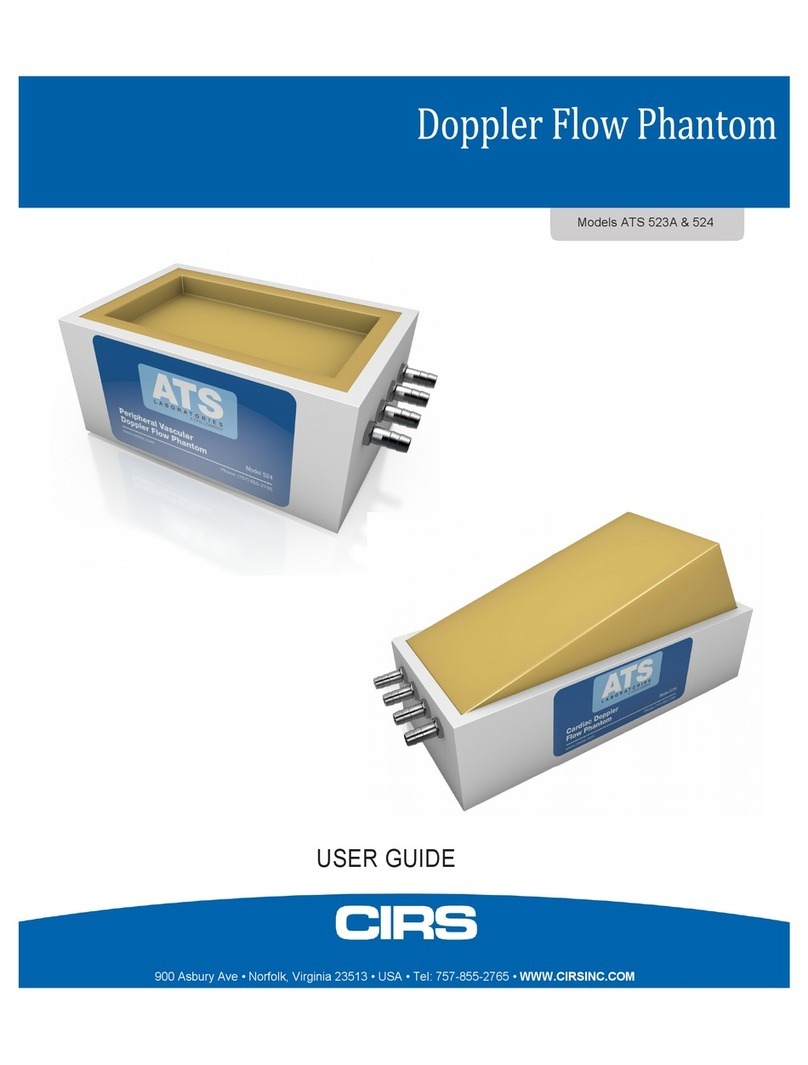
1
Overview
The Model 049 and 049A Elasticity
QA Phantoms are elasticity reference
tools developed for both shear wave
and compression elastography. The
phantoms contain targets of known
stiffness relative to the background
material and range in stiffness, diam-
eter and depth.
Both phantoms are made of CIRS'
proprietary Zerdine®hydrogel poly-
mer, which has been formulated to
produce lesions of differing Young’s
modulus. To maximize phantom
lifetime, this gel is contained in a rugged ABS plastic housing with a Saran-based
laminate membrane.
The Model 049 Elasticity QA Phantom contains 10 mm and 20 mm diameter
spheres of varying hardness relative to the background material. The spheres are
located at depths of 15 mm and 35 mm respectively and will appear hyperechoic to
the background using standard B-mode imaging.
The Model 049A contains sets of stepped cylinders that vary in diameter from 1.6
mm to 16.7mm. The stepped cylinders in each set are located at depths of 3 cm
and 6 cm. Each set has a different hardness relative to the background material and
will appear almost isoechoic to the background using standard B-mode imaging.
CIRS is certified to ISO 13485:2016 standards. We have an in-house test facility to
measure acoustic properties of speed, attenuation and relative contrast. In addi-
tion, two ultrasound systems are used to visually inspect each phantom. As a result,
every ultrasound phantom is subjected to rigorous testing both during manufacture
and upon completion. The user may observe very minor imperfections within the
product such as: very slight inhomogeneities with the background speckle pattern
and only seen under certain conditions or a very small air bubble in a place that
does not impact utility or integrity of the phantom. Any such anomalies have been
determined, by CIRS engineers, to not impact the quality, performance or usability
of the product and are deemed “aesthetic imperfections”. The embedded lesions
may contain random inhomogeneities. Such inhomogeneities may prove useful in
demonstrating the ability of sonoelastography techniques to discriminate subtle
differences in material properties. A Certificate of Compliance is issued with each
phantom.
Models 049 & 049A are
Suitable for:
• Determining dynamic range
• Checking system performance
over time
• Training and demonstrating of
system features
• Research and development











